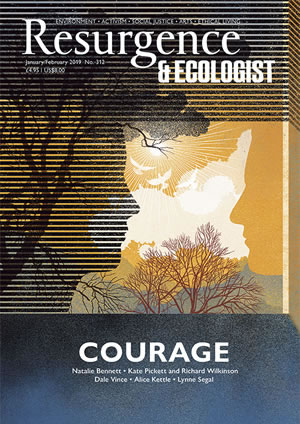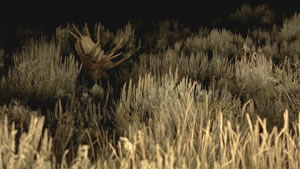Becoming Animal is a documentary by Scottish director Emma Davie and Canadian cinematographer Peter Mettler, produced in collaboration with the writer and philosopher David Abram. Unlike traditional Nature documentaries, which tend to show us untouched landscapes devoid of human life, this film takes the viewer on a very different kind of journey: one in which we are encouraged to see ourselves through the eyes of the environment we inhabit. This ‘more-than-human’ world, a phrase Abram often uses in various forms to point to our human-centric viewpoint, is explored through both his voice-over and the film-making approach. Through impressive cinematography and immersive sound design, we are transported into a ‘more-than-world’ world where high-definition image, macro video, Foley sound and overlaid music manipulate our senses. This tension between the narrative of Abram and the directors’ use of cutting-edge technology is what makes watching Becoming Animal a unique experience.
When we first meet Abram he is walking through a dark forest on the hunt for the calls of male elk. In between the eerie night-time soundscape and hushed voices of the film-makers, we hear the animals’ strange bugling. Abram muses that their evocative and plaintive sounds “seem to set the context for all of our human music-making”. In this manner he begins his thesis, where the human ear and eye are no longer central. Later, exploring the textures of a tree, he describes his hand as part of the tactile field it explores, where the smooth surface of the tree is in fact touching him back, and “sampling the chemistry” of his skin.
Central to this theme, Abram discusses the earthly beginnings of human language. Set to images of rock drawings, we are told that written languages and phonetic alphabets no longer ‘image’ anything in the “sensuous surroundings”. “The letters”, Abram says, “no longer function as windows opening onto a more-than-human language, but solely as mirrors reflecting the human face back upon itself.” This leads to a heightened sense of awareness in which to simply look and be: trees sway majestically in the wind as we focus on the sound of their movement, moose gaze at us with knowing eyes and we can’t help but feel the sentience within, and a slow-motion river becomes silent. However, at points, when Abram’s voice becomes too laboured and overbearing, or the images become almost too crisply defined and aesthetically fetishised, the effect is quickly lost.
This fine balance between descriptive narrative and visual imagery is part of the underlying question posed throughout the film. Mettler, who tells us that capturing Nature on his camera has “strangely been an affirmation of the moment, of being in the present”, asks, “How can technology possibly help us connect with this vibrant life that surrounds us?” Becoming Animal is littered with visual links to this extremely important question, pushing us to examine and observe our own use of technology: the moose that looked at us earlier becomes a moose surrounded by people with long-lensed cameras, and a hot spring turns into a cinematic set for camera-phone narcissism. Even the film-makers themselves occasionally appear in-shot, reflecting the film back upon itself and reminding us that what we are watching is a human construction. Through these scenes, it is hard not to feel that the task of decentring humans from their environments is largely weighed against the continual impulse we have to reaffirm our necessity in the world. Emerging technology and the proliferation of social-media sharing is somehow about convincing ourselves that we have experienced, that we are important. Through this perpetual connectedness with others we sustain the illusion that we truly matter, at least to someone, somewhere.
These addictive behaviours are pertinent when we consider that the film we are watching is itself tangled up in this contradictory trap; simultaneously providing us with a heightened perception of our earthly bodies and their belonging to the environment, it uses technological film techniques that distort ‘normal’ visual and aural perceptions. Although the film provides a lot of places in which we can ponder this conundrum, the question gets slightly lost towards the end as Abram’s voice takes over more and more and the luscious images become a little repetitive. It might be worth asking ourselves as viewers, then, how our consumption of images, where the world must be ‘filtered’ through technology for us to truly appreciate it, affects our perception of Nature, and whether this film somehow counters that, or makes us more aware of it.
Whatever conclusion you come to, and whether you find Abram’s prose wonderfully sensuous or simply a touch affected, Becoming Animal manages to open up these important questions in a way that is both self-aware and visually accomplished. This is credit to the film-makers’ skills as image-makers and editors, thinking deeply about their roles not just as producers, but also as consumers. The film joins a healthy debate about our environmental perceptions in the age of the Anthropocene, and how we can begin to see the world through eyes not only of other animals, but of landscape too. After all, if Abram is right, and our minds are not a “human property”, but rather a “property of the biosphere itself”, we should probably start thinking in an entirely different way about the planet on which we live: not as an object to be inhabited, but rather as a part of our very earthly being.








